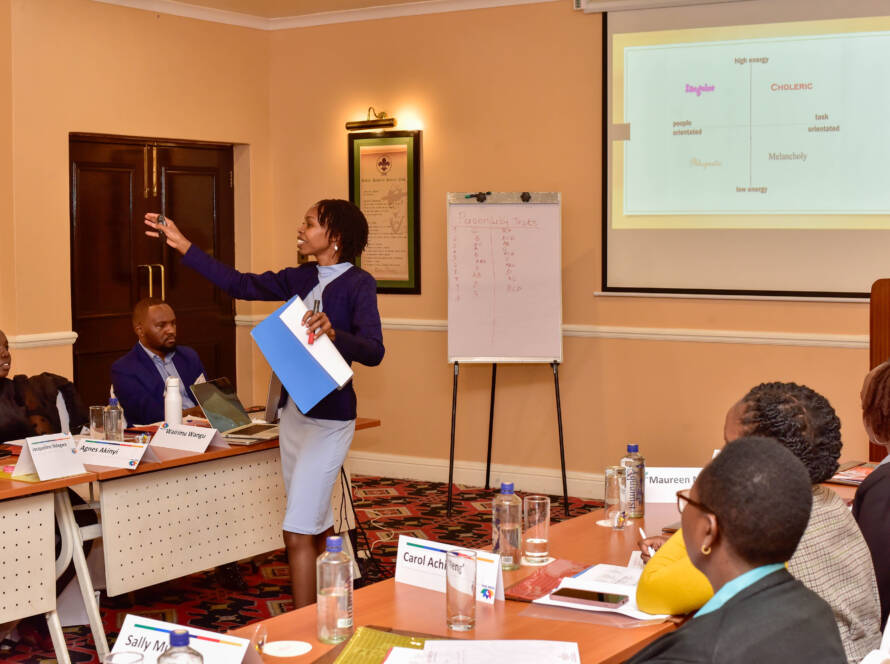Customer service teams often face difficult situations where conflicts arise due to misunderstandings, unmet expectations, or service issues. How they handle these situations determines customer satisfaction, brand reputation, and business success.
At Delight Africa Limited, we provide corporate training solutions to help businesses develop customer service teams that effectively manage conflicts, de-escalate tense situations, and turn dissatisfied customers into loyal advocates.
Why Conflict Resolution Training is Essential for Customer Service Teams
✅ 1. Improves Customer Satisfaction & Retention
✔ Employees learn to calmly handle frustrated customers.
✔ Professional conflict resolution reduces negative reviews and complaints.
📌 Fact: 70% of unhappy customers will return if their issues are resolved well.
✅ 2. Enhances Brand Reputation
✔ A poorly handled conflict can damage your company’s image.
✔ Skilled employees turn bad experiences into positive ones, improving public perception.
📌 Example: A hotel guest who initially had a bad check-in experience but received a sincere apology and a room upgrade will likely leave a positive review.
✅ 3. Reduces Employee Stress & Burnout
✔ Handling angry or difficult customers can be emotionally draining.
✔ Conflict resolution training equips employees with strategies to stay calm and professional.
📌 Best Practice: Teach employees to detach emotionally and focus on solutions rather than reacting defensively.
✅ 4. Increases Efficiency & Problem-Solving Skills
✔ Employees resolve conflicts faster, reducing call times and service delays.
✔ A well-trained team spends less time escalating issues and more time finding solutions.
📌 Fact: 60% of customers say long wait times during conflict resolution make them less likely to return.
Key Skills for Effective Conflict Resolution
🗣 1. Active Listening & Empathy
✔ Train employees to listen carefully without interrupting.
✔ Encourage empathy by acknowledging the customer’s frustration.
📌 Example: Instead of saying “That’s our policy,” say “I understand why you’re upset. Let’s find a solution together.”
💡 2. Staying Calm Under Pressure
✔ Teach employees to manage their emotions and avoid defensive responses.
✔ Train them to use neutral and reassuring language to de-escalate situations.
📌 Tip: Taking a deep breath before responding helps maintain professionalism.
🤝 3. Effective Communication Techniques
✔ Use positive language to reassure customers.
✔ Avoid blame or negative phrasing.
📌 Best Practice: Instead of “I can’t do that,” say “Here’s what I can do for you.”
🔄 4. Finding Win-Win Solutions
✔ Train employees to offer alternative solutions when the initial request isn’t possible.
✔ Encourage flexibility and problem-solving approaches.
📌 Example: If a customer wants a refund beyond the policy date, offer store credit as a compromise.
⏳ 5. Knowing When to Escalate Issues
✔ Teach employees when to involve a supervisor.
✔ Escalation should only happen when absolutely necessary.
📌 Tip: Employees should first try resolving conflicts independently before passing them to a manager.
Best Conflict Resolution Strategies for Customer Service Teams
🎭 1. The LEARN Method (Listen, Empathize, Apologize, Resolve, Notify)
✔ Listen carefully to the customer’s concerns.
✔ Empathize by acknowledging their frustration.
✔ Apologize sincerely for the inconvenience.
✔ Resolve the issue with an appropriate solution.
✔ Notify them of any follow-ups or next steps.
📌 Example: “I’m really sorry for the delay. I understand how frustrating that can be. Let’s see how we can fix this for you.”
🛠 2. The HEARD Technique (Hear, Empathize, Apologize, Resolve, Diagnose)
✔ Hear the customer out fully.
✔ Empathize with their situation.
✔ Apologize sincerely.
✔ Resolve the issue as best as possible.
✔ Diagnose the root cause to prevent future issues.
📌 Example: A customer upset about a late delivery gets an apology, a tracking update, and a discount on their next order.
💬 3. The Three-Step Conflict Resolution Model
1️⃣ Acknowledge the Issue – Show the customer you understand their frustration.
2️⃣ Offer a Solution – Present options that work within company policies.
3️⃣ Ensure Follow-Up – Confirm resolution and check for further needs.
📌 Best Practice: Always ask, “Does this solution work for you?” to ensure customer agreement.
How Delight Africa Limited Can Help
At Delight Africa Limited, we provide customized Conflict Resolution Training for customer service teams, covering:
✅ Active Listening & Empathy – Handling complaints professionally.
✅ De-escalation Techniques – Managing difficult conversations.
✅ Effective Communication – Using positive, solution-focused language.
✅ Handling Aggressive Customers – Staying calm and professional.
✅ Win-Win Problem Solving – Finding fair resolutions.
📞 Contact us today to equip your team with the skills to turn conflicts into opportunities for customer loyalty!


